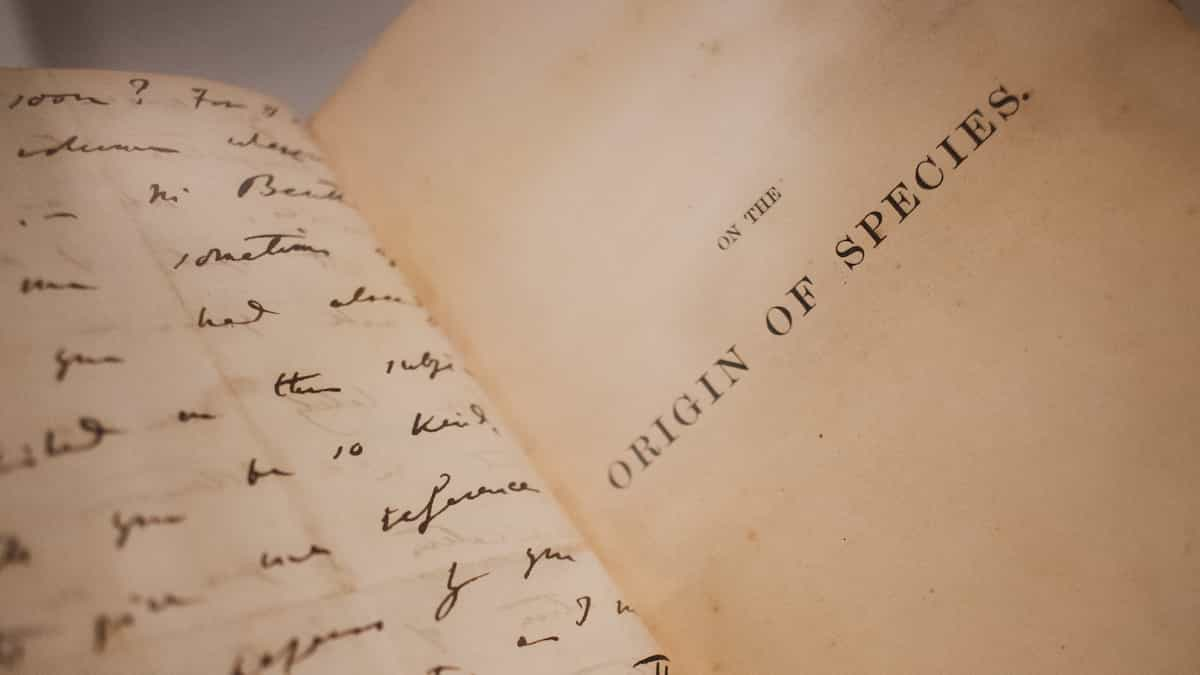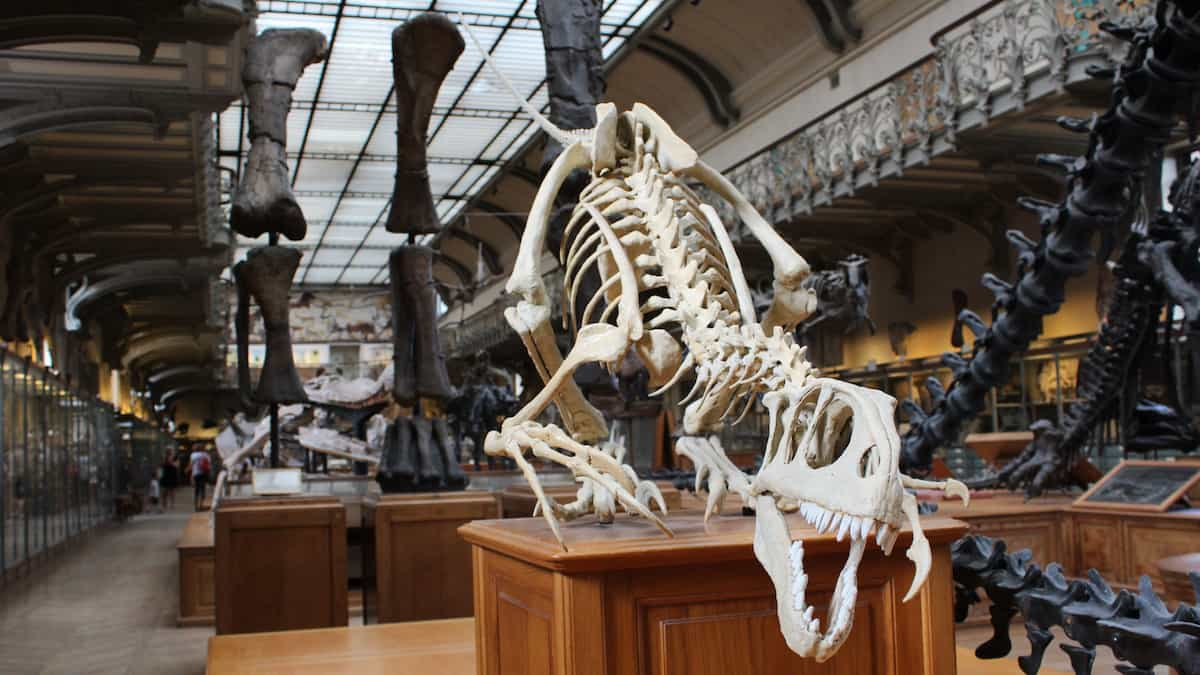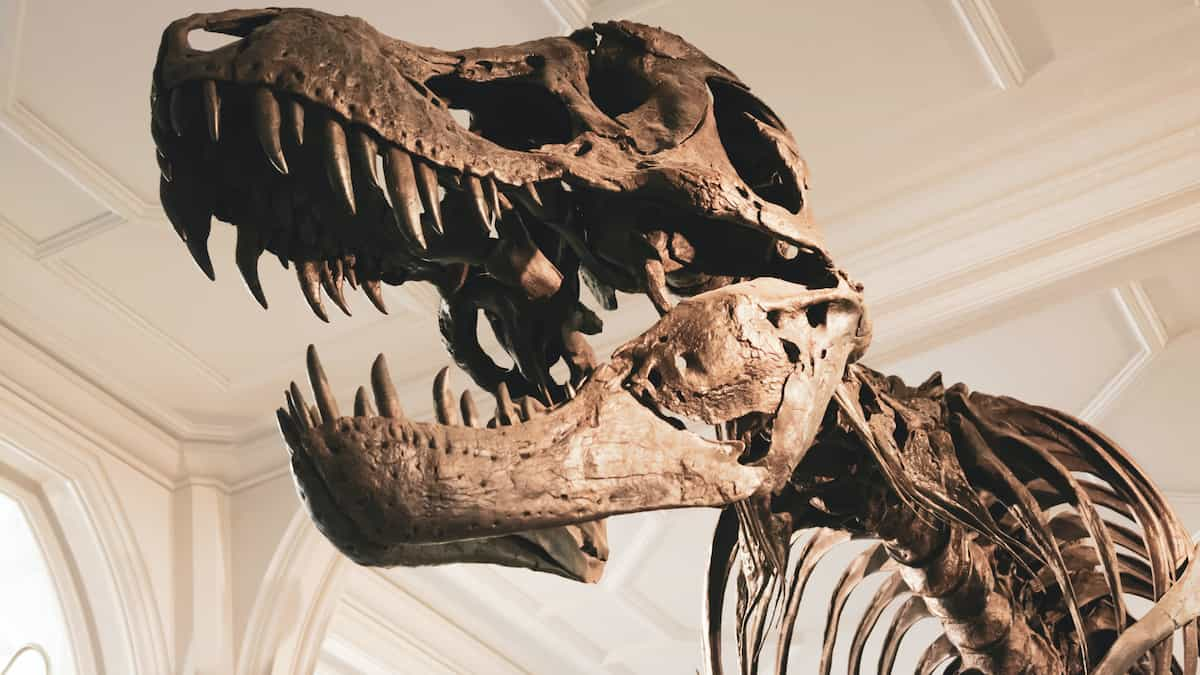Flow-chart Completion Questions in IELTS Reading
Learn about Flow-chart completion questions in IELTS reading with an overview, recommended strategy and practice questions.
by Tim Martyn

Overview
Flow-chart completion questions test your ability to understand details and/or the main ideas of a section of the passage.
Here are some key points about Flow-chart completion questions:
- You’ll be asked to complete a flow-chart by selecting words from the passage. It’s much less common, but you could be asked to select from a list of possible answers instead.
- The flow-chart will summarise a sequence of events in a process.
- The answers don’t necessarily occur in order in the passage but will usually come from one part of the passage rather than being spread across the entire passage.
- They’re generally used with descriptive passages.
Example questions
Here are some example Flow-chart completion questions from a passage about natural selection.
You can try these questions in the practice section.
Questions 1 – 3
Complete the flow-chart. Write ONE WORD ONLY from the text in each gap.
Maximise your IELTS reading score with these essential tips.
Recommended strategy
Here’s my recommended strategy for answering Flow-chart completion questions. I’ll use Question 1 to demonstrate the steps you need to take.
Step 1 > Quickly study the flow-chart
Don’t spend too long on this step. Your goal is to gain a general understanding of what the flow-chart is summarising. Pay attention to the title (if there is one). This will help you find the relevant part of the passage.
Step 2 > Identify key words
Key words are the important words that help you understand the focus of the question. Key words include names, places and figures, as well as nouns, verbs and adjectives.
You can look for key words in the title (if there is one). Each box or step in the flow-chart will also contain key words.
Here’s the first part of the flow-chart with the key words highlighted.
Grants seems to be a proper noun of some kind – most likely someone’s surname. The fact that it starts with a capital letter will make it easy to find in the reading passage. Another useful key word is early 1977 because numbers tend to stand out in the passage.
Step 3 > Scan the passage to find the key words
Once you’ve identified the key words, you can scan for them in the passage. It’s important to keep in mind that synonyms – words and phrases with the same or a similar meaning – are often used in the passage rather than the actual key words from the question, so you need to look for them, too.
Here’s the reading passage. You can see that the key words and/or synonyms for this question have been highlighted.
↕ scrollable window
In the mid-nineteenth century, two naturalists, Charles Darwin and Alfred Russel Wallace, independently conceived and described the actual mechanism for evolution. Importantly, each naturalist spent time exploring the natural world on expeditions to the tropics. From 1831 to 1836, Darwin travelled around the world on H.M.S. Beagle, including stops in South America, Australia and the southern tip of Africa. Wallace travelled to Brazil to collect insects in the Amazon rainforest from 1848 to 1852 and to the Malay Archipelago from 1854 to 1862. Darwin’s journey, like Wallace’s later journeys to the Malay Archipelago, included stops at several island chains, the last being the Galápagos Islands west of Ecuador.
On these islands, Darwin observed species of organisms on different islands that were clearly similar, yet had distinct differences. For example, the ground finches inhabiting the Galápagos Islands comprised several species with a unique beak shape. The species on the islands had a graded series of beak sizes and shapes with very small differences between the most similar. He observed that these finches closely resembled another finch species on the South American mainland. Darwin imagined that the island species might be species modified from one of the original mainland species. Upon further study, he realised that each finch’s varied beaks helped the birds acquire a specific type of food. For example, seed-eating finches had stronger, thicker beaks for breaking seeds, and insect-eating finches had spear-like beaks for stabbing their prey.
Wallace and Darwin both observed similar patterns in other organisms and they independently developed the same explanation for how and why such changes could take place. Darwin called this mechanism natural selection. Natural selection, or “survival of the fittest”, is the more prolific reproduction of individuals with favourable traits that survive environmental change because of those traits. This leads to evolutionary change.
For example, Darwin observed a population of giant tortoises in the Galápagos Archipelago to have longer necks than those that lived on other islands with dry lowlands. These tortoises were “selected” because they could reach more leaves and access more food than those with short necks. In times of drought, when fewer leaves would be available, those that could reach more leaves had a better chance to eat and survive than those that could not reach the food source. Consequently, long-necked tortoises would be more likely to be reproductively successful and pass the long-necked trait to their offspring. Over time, only long-necked tortoises would be present in the population.
Natural selection, Darwin argued, was an inevitable outcome of three principles that operated in nature. First, most characteristics of organisms are inherited, or passed from parent to offspring. Although no one, including Darwin and Wallace, knew how this happened at the time, it was a common understanding. Second, more offspring are produced than are able to survive, so resources for survival and reproduction are limited. The capacity for reproduction in all organisms outstrips the availability of resources to support their numbers. Thus, there is competition for those resources in each generation. Both Darwin and Wallace’s understanding of this principle came from reading economist Thomas Malthus’ essay that explained this principle in relation to human populations. Third, offspring vary among each other in regard to their characteristics and those variations are inherited. Darwin and Wallace reasoned that offspring with inherited characteristics which allow them to best compete for limited resources will survive and have more offspring than those individuals with variations that are less able to compete. Because characteristics are inherited, these traits will be better represented in the next generation. This will lead to change in populations over generations in a process that Darwin called descent with modification. Ultimately, natural selection leads to greater adaptation of the population to its local environment. It is the only mechanism known for adaptive evolution.
In 1858, Darwin and Wallace presented papers at the Linnean Society in London that discussed the idea of natural selection. The following year, Darwin’s book, On the Origin of Species, was published. His book outlined in considerable detail his arguments for evolution by natural selection.
It is difficult and time-consuming to document and present examples of evolution by natural selection, but the Galápagos finches are an excellent example. Researchers Peter and Rosemary Grant – a husband-and-wife team – first travelled to Daphne Major in the Galápagos Islands in 1973 to study the finch populations there. They had initially planned to study them over a two-year period, but it evolved into a 40-year research project that has provided important evidence of natural selection. Much of the Grants’ research focused on the medium ground finch.
The island of Daphne Major saw only 24 millimetres of rainfall in early 1977, a time of year that was not supposed to be so dry. Finches with larger beaks survived because they were able to crack open the larger, tougher seeds that remained, but most of those with smaller beaks succumbed to starvation. In 1978, the Grants returned to Daphne Major to document the effect on the next generation of medium ground finches, discovering that the offspring had measurably larger beaks. However, the endless deluge of 1982–83 reversed the trend. There was a marked shift in the types of vegetation growing on the island, which gave finches with smaller beaks an advantage over their counterparts with larger beaks. In the following years, the Grants measured beak sizes and found that the average beak size had nudged lower. Over the course of just a few years, the Grants had witnessed natural selection in action. Their findings and insights have become iconic in the field of evolutionary biology.
__________Here are the key words from the notes as well as the words used in the passage.
| Notes | Passage |
|---|---|
| Grants | Grant/Grants |
| research | research |
| early 1977 | early 1977 |
| More/expected | idea expressed through only and was not supposed to be |
Step 4 > Read carefully
Once you’ve found the relevant part of the passage, read it carefully and decide on your answer. You should always read the sentences before and after the sentences that contain key words to make sure you don’t miss anything.
Here’s the relevant part of the passage.
The island of Daphne Major saw only 24 millimetres of rainfall in early 1977, a time of year that was not supposed to be so dry.
Rainfall seems to be the correct answer. However, it’s very important to make sure that our answer fits within the word limit for the question. We can see that the instructions say to write ONE WORD ONLY from the passage for each answer. Rainfall fits within this word limit, so we can safely choose it as our answer.
Final tips
Here are some important final tips:
- Remember that the answers don’t necessarily occur in order in the passage.
- Remember that all of your answers must be words from the passage.
Practice questions
Now it’s your turn to practise. Answer the remaining Flow-chart completion questions from the passage using the steps outlined above.
↕ scrollable window
In the mid-nineteenth century, two naturalists, Charles Darwin and Alfred Russel Wallace, independently conceived and described the actual mechanism for evolution. Importantly, each naturalist spent time exploring the natural world on expeditions to the tropics. From 1831 to 1836, Darwin travelled around the world on H.M.S. Beagle, including stops in South America, Australia and the southern tip of Africa. Wallace travelled to Brazil to collect insects in the Amazon rainforest from 1848 to 1852 and to the Malay Archipelago from 1854 to 1862. Darwin’s journey, like Wallace’s later journeys to the Malay Archipelago, included stops at several island chains, the last being the Galápagos Islands west of Ecuador.
On these islands, Darwin observed species of organisms on different islands that were clearly similar, yet had distinct differences. For example, the ground finches inhabiting the Galápagos Islands comprised several species with a unique beak shape. The species on the islands had a graded series of beak sizes and shapes with very small differences between the most similar. He observed that these finches closely resembled another finch species on the South American mainland. Darwin imagined that the island species might be species modified from one of the original mainland species. Upon further study, he realised that each finch’s varied beaks helped the birds acquire a specific type of food. For example, seed-eating finches had stronger, thicker beaks for breaking seeds, and insect-eating finches had spear-like beaks for stabbing their prey.
Wallace and Darwin both observed similar patterns in other organisms and they independently developed the same explanation for how and why such changes could take place. Darwin called this mechanism natural selection. Natural selection, or “survival of the fittest”, is the more prolific reproduction of individuals with favourable traits that survive environmental change because of those traits. This leads to evolutionary change.
For example, Darwin observed a population of giant tortoises in the Galápagos Archipelago to have longer necks than those that lived on other islands with dry lowlands. These tortoises were “selected” because they could reach more leaves and access more food than those with short necks. In times of drought, when fewer leaves would be available, those that could reach more leaves had a better chance to eat and survive than those that could not reach the food source. Consequently, long-necked tortoises would be more likely to be reproductively successful and pass the long-necked trait to their offspring. Over time, only long-necked tortoises would be present in the population.
Natural selection, Darwin argued, was an inevitable outcome of three principles that operated in nature. First, most characteristics of organisms are inherited, or passed from parent to offspring. Although no one, including Darwin and Wallace, knew how this happened at the time, it was a common understanding. Second, more offspring are produced than are able to survive, so resources for survival and reproduction are limited. The capacity for reproduction in all organisms outstrips the availability of resources to support their numbers. Thus, there is competition for those resources in each generation. Both Darwin and Wallace’s understanding of this principle came from reading economist Thomas Malthus’ essay that explained this principle in relation to human populations. Third, offspring vary among each other in regard to their characteristics and those variations are inherited. Darwin and Wallace reasoned that offspring with inherited characteristics which allow them to best compete for limited resources will survive and have more offspring than those individuals with variations that are less able to compete. Because characteristics are inherited, these traits will be better represented in the next generation. This will lead to change in populations over generations in a process that Darwin called descent with modification. Ultimately, natural selection leads to greater adaptation of the population to its local environment. It is the only mechanism known for adaptive evolution.
In 1858, Darwin and Wallace presented papers at the Linnean Society in London that discussed the idea of natural selection. The following year, Darwin’s book, On the Origin of Species, was published. His book outlined in considerable detail his arguments for evolution by natural selection.
It is difficult and time-consuming to document and present examples of evolution by natural selection, but the Galápagos finches are an excellent example. Researchers Peter and Rosemary Grant – a husband-and-wife team – first travelled to Daphne Major in the Galápagos Islands in 1973 to study the finch populations there. They had initially planned to study them over a two-year period, but it evolved into a 40-year research project that has provided important evidence of natural selection. Much of the Grants’ research focused on the medium ground finch.
The island of Daphne Major saw only 24 millimetres of rainfall in early 1977, a time of year that was not supposed to be so dry. Finches with larger beaks survived because they were able to crack open the larger, tougher seeds that remained, but most of those with smaller beaks succumbed to starvation. In 1978, the Grants returned to Daphne Major to document the effect on the next generation of medium ground finches, discovering that the offspring had measurably larger beaks. However, the endless deluge of 1982–83 reversed the trend. There was a marked shift in the types of vegetation growing on the island, which gave finches with smaller beaks an advantage over their counterparts with larger beaks. In the following years, the Grants measured beak sizes and found that the average beak size had nudged lower. Over the course of just a few years, the Grants had witnessed natural selection in action. Their findings and insights have become iconic in the field of evolutionary biology.
__________Questions 1 – 3
Complete the flow-chart. Write ONE WORD ONLY from the text in each gap.
Feedback
Click below for the answers.
The correct answer is “rainfall”.
Here’s the relevant part of the passage:
“The island of Daphne Major saw only 24 millimetres of rainfall in early 1977, a time of year that was not supposed to be so dry.”The correct answer is “starvation”.
Here’s the relevant part of the passage:
“Finches with larger beaks survived because they were able to crack open the larger, tougher seeds that remained, but most of those with smaller beaks succumbed to starvation.”The correct answer is “vegetation”.
Here’s the relevant part of the passage:
“However, the endless deluge of 1982–83 reversed the trend. There was a marked shift in the types of vegetation growing on the island, which gave finches with smaller beaks an advantage over their counterparts with larger beaks.”
















